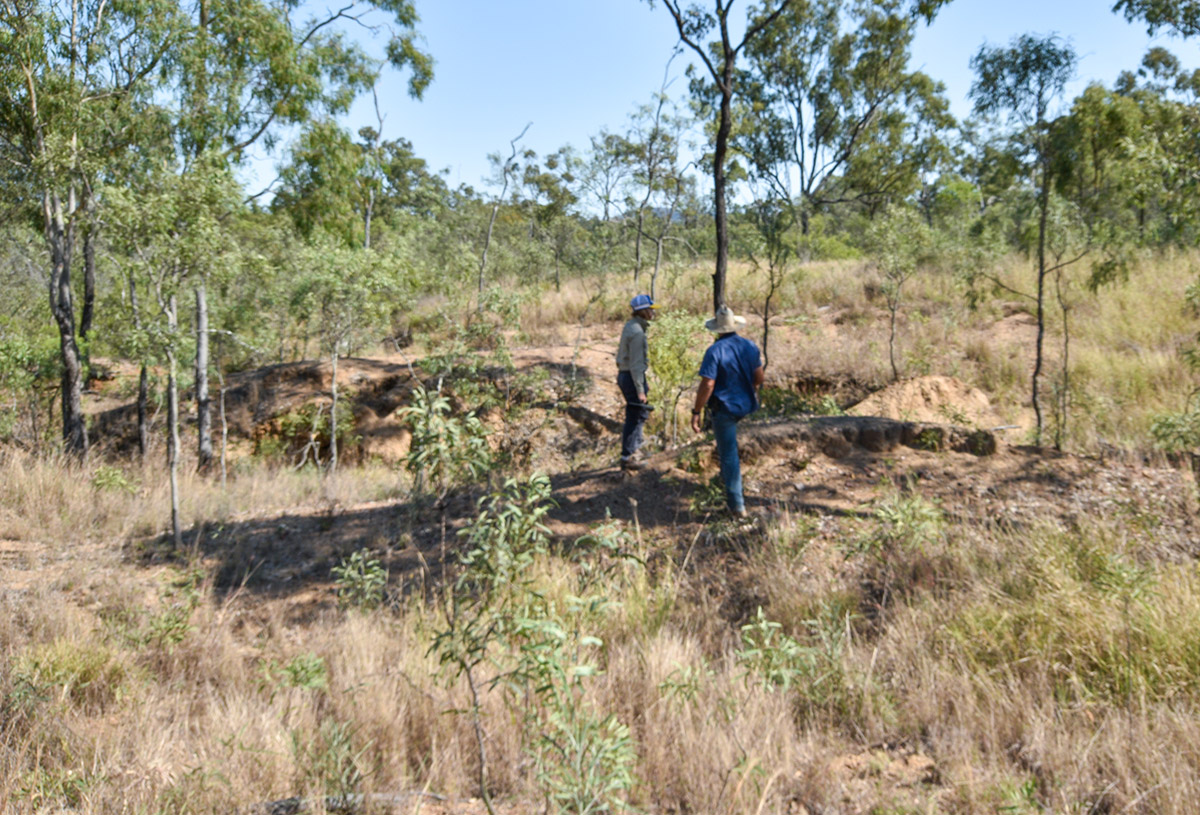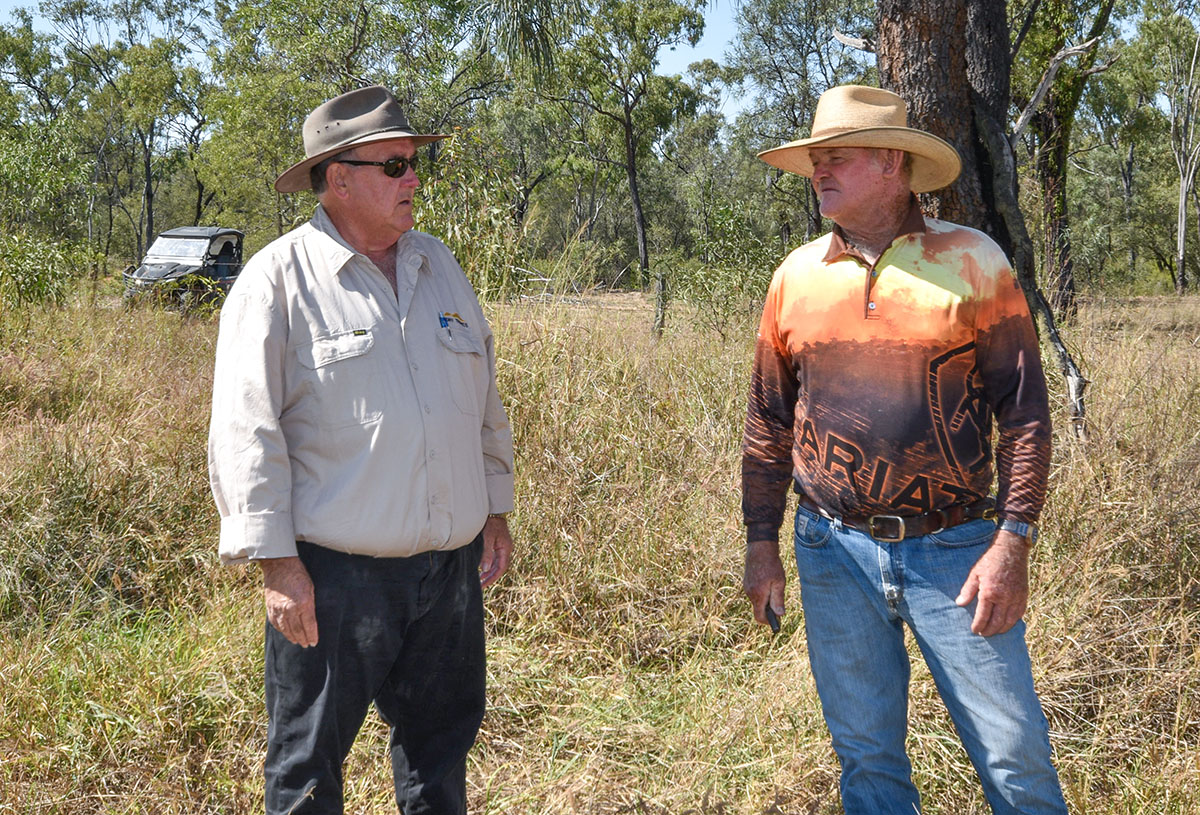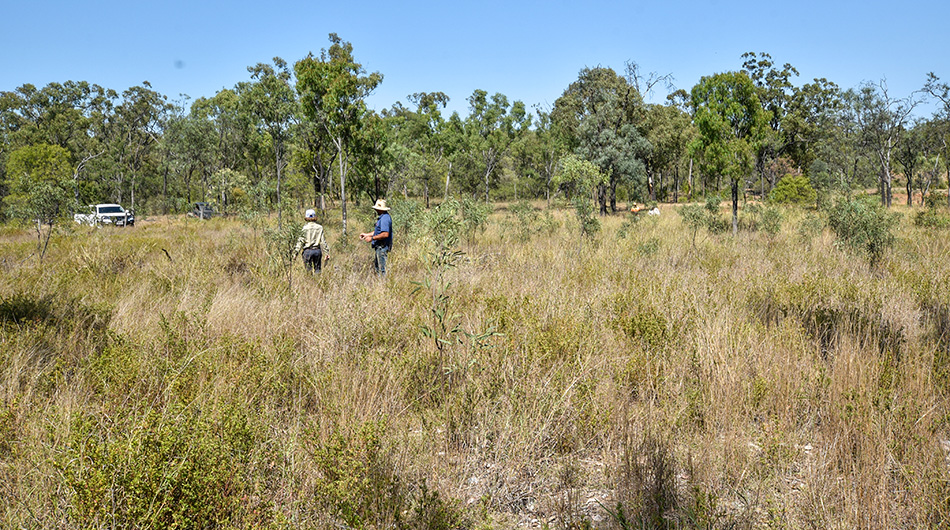Burdekin Major Integrated Project — Gully Maintenance and Monitoring at EXEVALE
Successful application of familiar technique halts gully erosion
The Site
(Completed 2020)
Erosion repair works aimed to halt an active 2m deep gully located at the base of a small hill with head cuts slowly making their way up-slope.
The soil is a sodic duplex with 20cm grey topsoil and deep dispersive mottled red and yellow clay subsoil derived from decomposing granite.
The landholder has had success in the past with other gullies on the property and as a result, the same remediation technique was used to remediate the gully. This included collecting rock from areas around the property to fill and line the heads of the gully system.
Gully heads were battered back at least to a 1:3 slope and seeded. Topsoil, organic matter were used to help revegetate the site, and seeded.
A stick rake line was constructed upslope of the gully and fenced to evenly distribute the flow of water across the landscape and to reduce the flow arriving at the remediated gully heads. The stick rake line was graded at 0.5 per cent (12cm fall every 25m) to direct water away from the gully.
The 2022 and 2023 monitoring reports state the site remediation work is in excellent condition with good ground cover, and there is no recommended maintenance work. One reason attributed to this is that stock is excluded from the site.
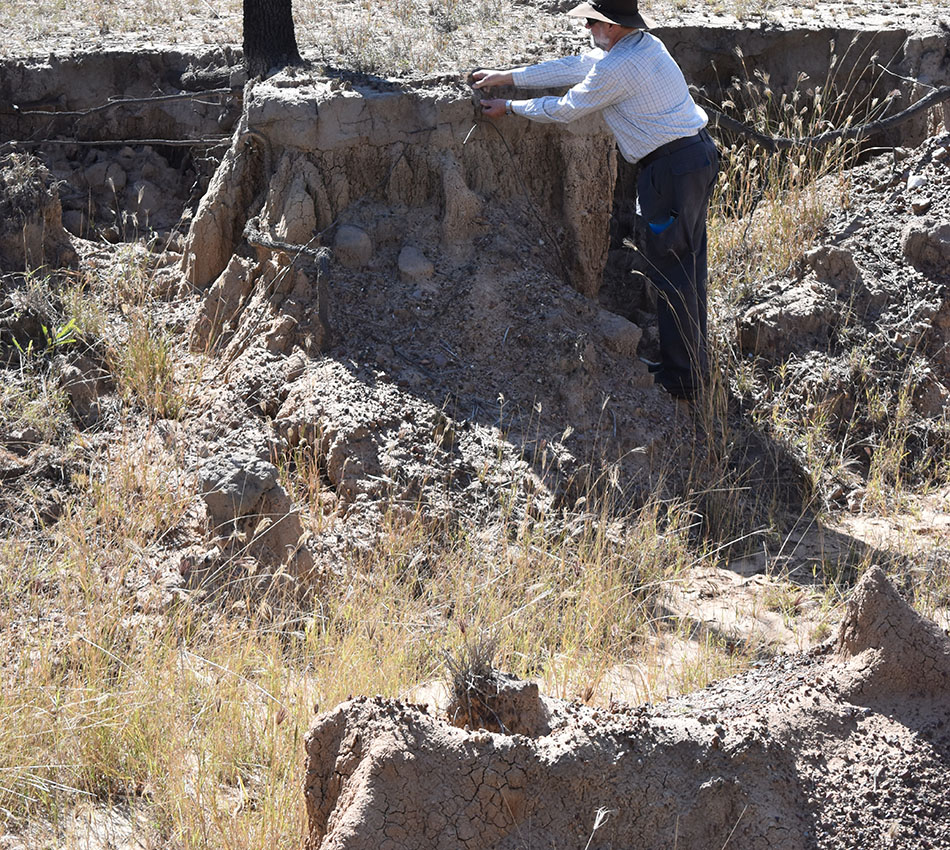
Soil conservation expert John Day inspects erosion features on Exevale Station.
Landholder observations
Rehabilitation benefits
- The design and construction has worked, the gully head has stopped progressing, protecting upslope grazing land.
- To have been able to have input into the design, drawing upon knowledge and skills (and machinery) from undertaking remediation works previously on the property.
- Access to resources (rocks and organic matter) readily available on the property, therefore reducing costs.
- Following a plan: for example, removed and stockpiled the topsoil from the site which was replaced following earthworks; battered the sharp edges of the gully, lined the floor with large rocks, followed by smaller rocks, then covered with a mixture of topsoil, and organic matter transferred from the cattle yards, along with a seed mix.
- Fencing off the flowline has allowed vegetation to establish on the gully walls and floor, reducing soil loss.
- Improved pasture species and plant health including (but not limited to) Seca stylo, buffel, Indian couch, Black speargrass (Heteropogon contortus) and Kangaroo grass (Themeda triandra). Siatro (Macroptilium atropurpureum) has covered the gully head rock fills like a protective blanket.
- Inside the stock exclusion fence area there’s a significant number of Kangaroo grass tussocks and Black speargrass tussocks, also a much greater biomass.
- Sediment is being trapped rather than ending up in watercourses, trapped by the stick rake line and the gully head works.
- Observed an increase in wildlife including birds and butterflies.
Grazing land management
- Stock exclusion fencing is an effective management tool to improve, or maintain, native vegetation, and promotes species diversity.
- Stock has been excluded from the site since completion of works (three years), and there’s no plan to graze the paddock in the near future. This is in part due to this paddock not being critical to the current grazing management plan for the property.
NQ Dry Tropics Soil Conservation Officer Bernie Claussen and Exevale Station grazier Buster O’Loughlin inspect the result.
NQ Dry Tropics Civil Works Coordinator Damian Flintham (left) and Exevale grazier Darcy O’Loughlin.
Buster’s assessment
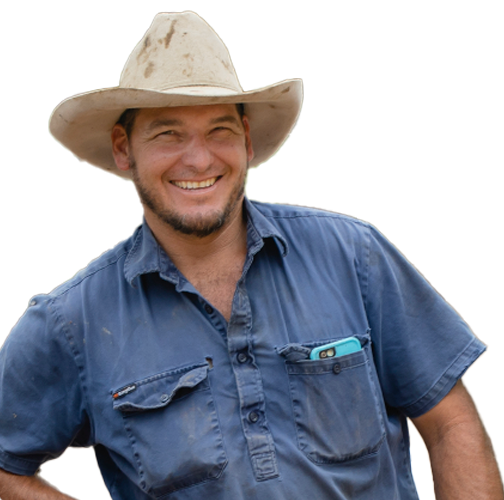
This gully needed fixing because we’ve been losing soil from the surrounding catchment for a long time.
If we didn’t do something we knew we’d be dealing with a much bigger problem later on.
At the end of the day you want your country to have sufficient groundcover for two reasons, to have enough feed for stock during the dry, and to prevent erosion.
All the material was sourced on site. We have a lot of rock, located close to the gully which was easy to access.
We also had the right machinery to do the job which meant making the job a lot cheaper. We spread the finished earthworks with three to four inches of organic matter from the cattle yards, and threw out seed. The manure made all the difference, plant growth took off after the first shower of rain. It’s also a good seed bank, containing local species, adapted to local conditions.
I’m really happy with the volume and species established, they’re flourishing. There’s Seca, buffel, Indian couch, Black speargrass, Kangaroo grass, Siatro, and Green Panic.
These will multiply and spread… how quickly depends on the seasons, of course.
We’ve locked up the paddock. We don’t need this patch of country to grow cattle. It’s not making a difference to carrying capacity so we’re happy to keep it locked up.
It’s about improving landscape function for the long term, and removing the eyesore, gullies are ugly scars.
You can’t just deal with the gully. You have to manage the catchment.
A stick rake line was constructed upslope of the gully on the contour, graded 12cm fall every 25 metres, to direct water away from the gully.
The stacks have caught about half a metre of sand in the past three years which is coming off sandy soil higher up in bulloak country, beyond the stock exclusion zone.
In the long term we expect to see the stacks filled with sand. To prevent a pour being created on the bottom side of the stacks we may have to burn the sticks. If necessary, we may have to construct others elsewhere in the catchment.
It’s a long term job, observing what’s going on, and making repairs or adjustments depending on what’s happening in the landscape.
We’re also going to continue to carry out remediation works on gully heads in other parts of the property. We take the view that if you’re going to fix one you should do the lot within the cluster.
It’s about addressing an erosion problem holistically. Why halt erosion on one gully and not the others? That seems like a counterproductive exercise.
We also expect to come back to these sites to carry out maintenance and fix any breakthroughs and rills. We’re in this for the long-term.
Lessons learnt
- It’s important to reduce the risk of erosion during construction works, for example, where possible do not remove or disturb topsoil or vegetation, this promotes accelerated growth post earthworks.
- Cattle manure is excellent organic matter. Manure was added to the top dressing and has helped to improve soil structure and bind soil aggregates together which has helped resist physical breakdown of soil.
- Excluding stock from the site has resulted in the recovery of grass and groundcover vegetation, including an increase in species richness.
- Excluding (or reducing) livestock grazing pressure within and around gullies in hillslope drainage lines is a method of gully erosion control which could deliver substantial reductions in sediment yield.
- Stick rake lines placed directly across the slope on the level contour, improves infiltration of water. They’re also a low cost intervention.
Monitoring
The site is being monitored to evaluate effectiveness of treatment.
It’s monitored each year in the post wet season (April-July).
Site monitoring applies industry standard tools Land Condition Assessment Tool advanced (LCAT) and Gully Maintenance Tool (GMT). These tools enable finer scale changes to be measured over time.
- Land Condition Assessment Tool advanced (LCAT).
A minimum of two LCATS are carried out immediately upslope of the gully, in the base of the rehabilitated gully, and opportunistically depending on local conditions.
LCATs indicate many biophysical aspects demonstrating the process of gully stabilisation. - Gully Maintenance Tool (GMT).
GMT surveys take into account a range of biophysical elements including gully head movement, treatment type, treatment stability, ground cover and composition, species, rainfall, and photo-points targeting key gully and erosion features.
Landholder feedback about stocking data and environmental influences such as rainfall is also collected.
NQ Dry Tropics Soil Conservation Officer Bernie Claussen and Exevale Station grazier Buster O’Loughlin inspect the result.

